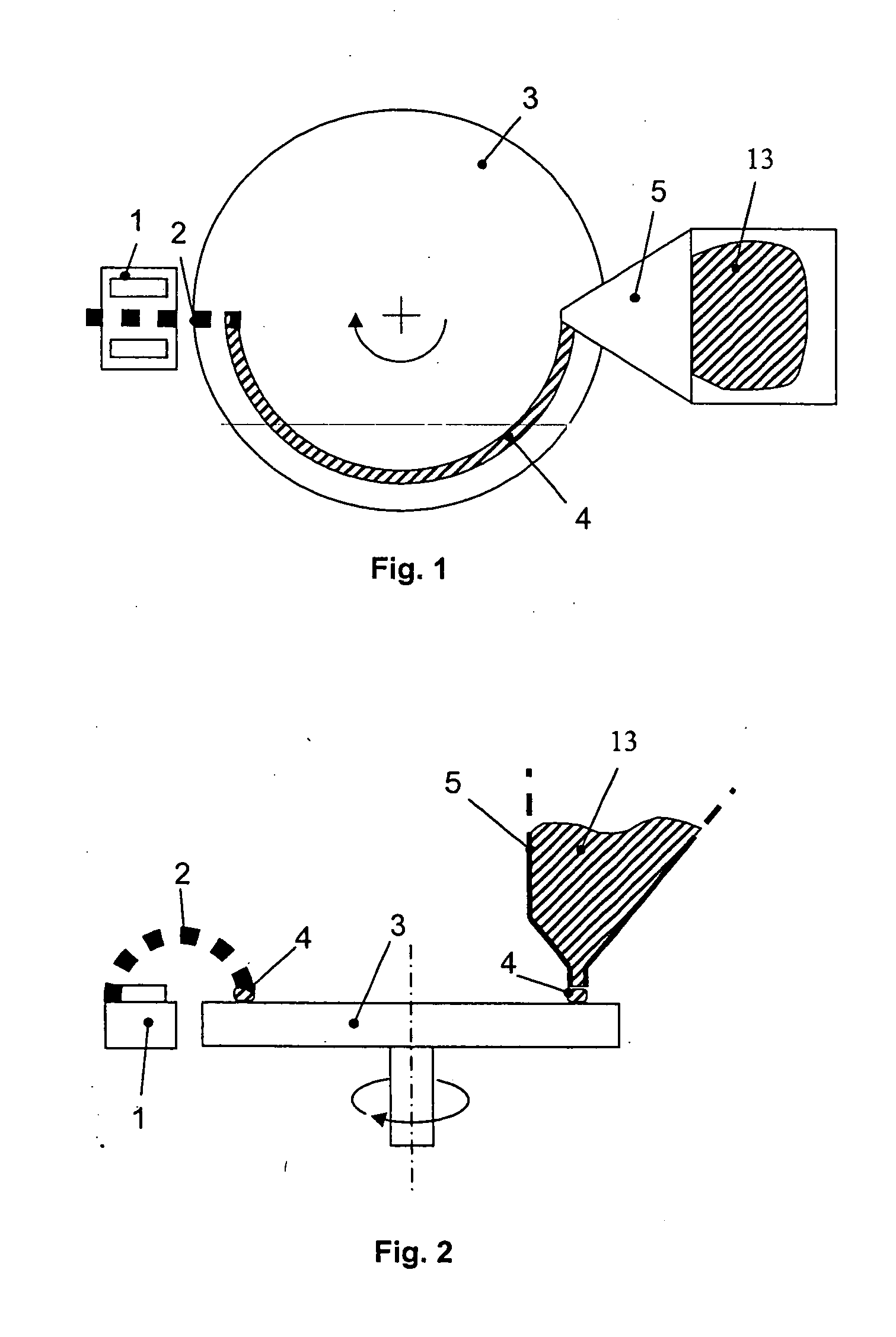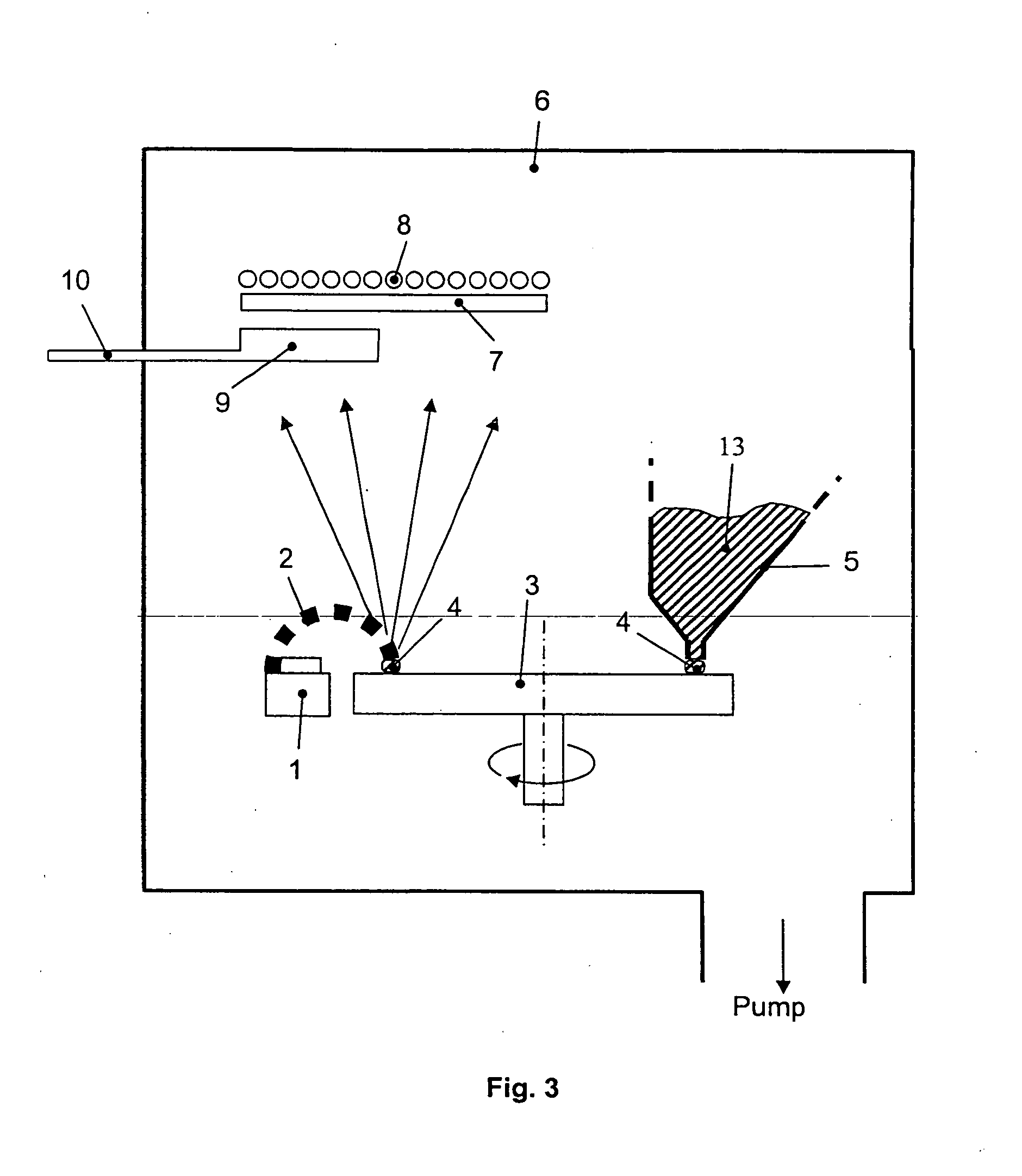Device and method for the evaporative deposition of a coating material
a coating material and device technology, applied in the direction of ion implantation coating, chemical vapor deposition coating, coatings, etc., can solve the problems of difficult to evaporate mixtures of materials, the film composition on a large area is inevitable, and the coating technology is very demanding
- Summary
- Abstract
- Description
- Claims
- Application Information
AI Technical Summary
Benefits of technology
Problems solved by technology
Method used
Image
Examples
example 1
[0055] Granular evaporation material 13 is conducted by a trapezoid funnel 5 onto a rotating, water—cooled copper turntable 3 of an electron beam evaporator 1. Due to the rotation of the turntable 3 a fine trace of material 4 is extracted at the bottom of the funnel 5 and delivered to the electron beam 2 on the opposite side. The power and focus of the electron beam 2 is adjusted in such a way, that upon entering the hot evaporation zone the arriving grains of the evaporation material evaporate rapidly and essentially without residues, i.e. they evaporate quantitatively. The vapor spreads unimpeded within the high vacuum chamber 6 and condenses onto a substrate 7 which can be heated if necessary (cf. Substrate heater 8 in FIG. 3). If required, a reactive gas can also be introduced into the chamber 6 or supplied directly at the substrate 7 by an appropriate device 9, 10.
[0056] In contrast to the mentioned state of the art of Davis et al. the flash evaporation is used as a one-step t...
example 2
[0059] The setup corresponds to that described in example 1. The granulate 13, however, originates from a closed storage container 5 which can be heated by heater elements 11 and which can be pumped at through a pumping neck to remove released residual gas. With such a setup evaporation rates of 5 nm / s have been achieved. For this, a preferred grain size of 100-200 μm has been used and the preferred scanning repetition frequency was 90 Hz. The stoichiometry deviation on an area of 20 cm×20 cm was merely 1%.
example 3
[0060] The setup corresponds to that described in example 1. The granulate 13, however, is supplied through a funnel 5, which is heated only in its bottom outlet section by heater elements 11. The thereby released water vapor is pumped away directly at its origin by a suction pipe 12, preferably with a sieve in front of the inlet (not shown).
PUM
| Property | Measurement | Unit |
|---|---|---|
| grain size | aaaaa | aaaaa |
| grain size | aaaaa | aaaaa |
| repetition frequency | aaaaa | aaaaa |
Abstract
Description
Claims
Application Information
 Login to View More
Login to View More - R&D
- Intellectual Property
- Life Sciences
- Materials
- Tech Scout
- Unparalleled Data Quality
- Higher Quality Content
- 60% Fewer Hallucinations
Browse by: Latest US Patents, China's latest patents, Technical Efficacy Thesaurus, Application Domain, Technology Topic, Popular Technical Reports.
© 2025 PatSnap. All rights reserved.Legal|Privacy policy|Modern Slavery Act Transparency Statement|Sitemap|About US| Contact US: help@patsnap.com



